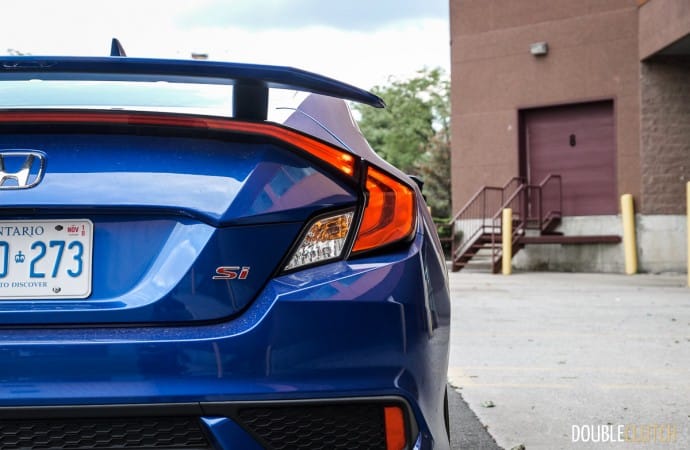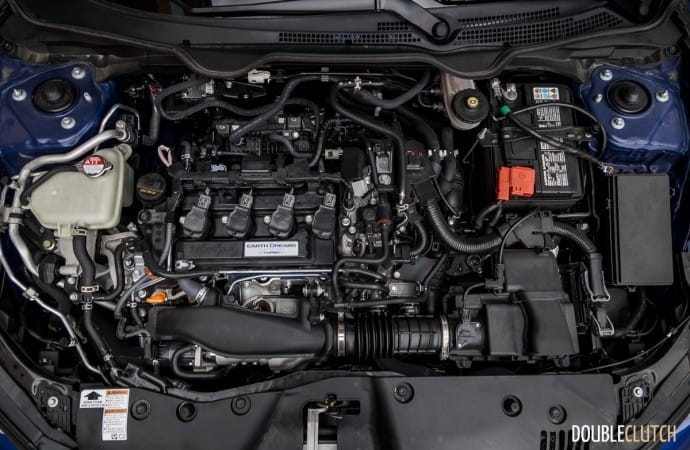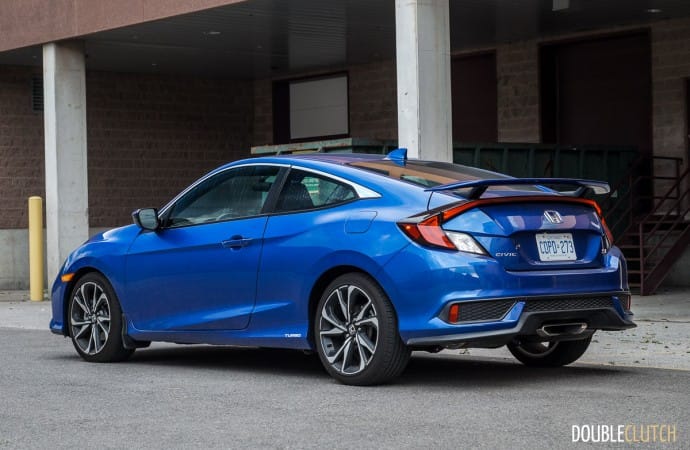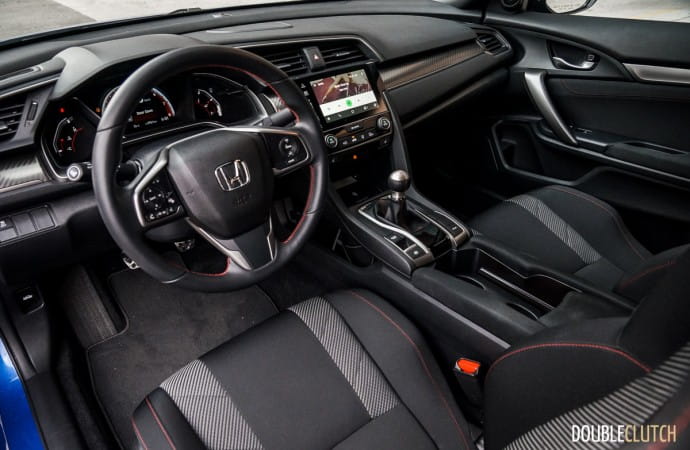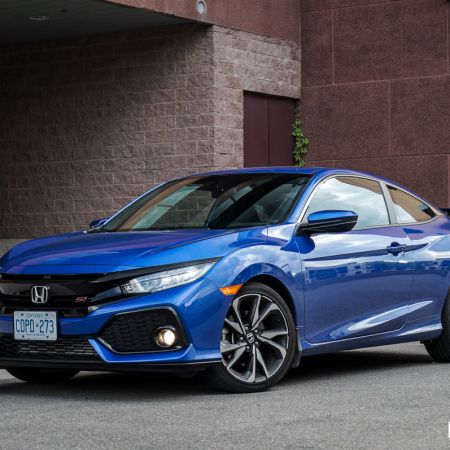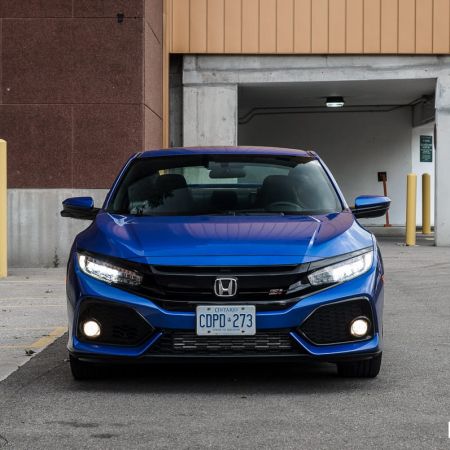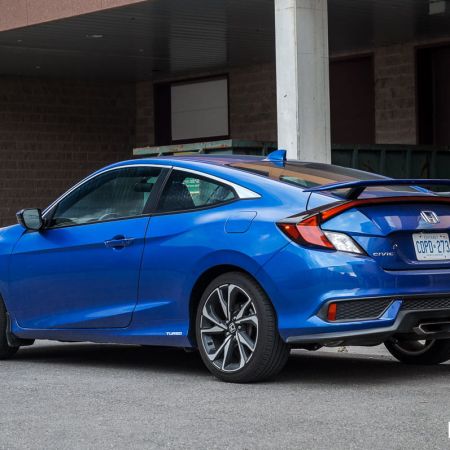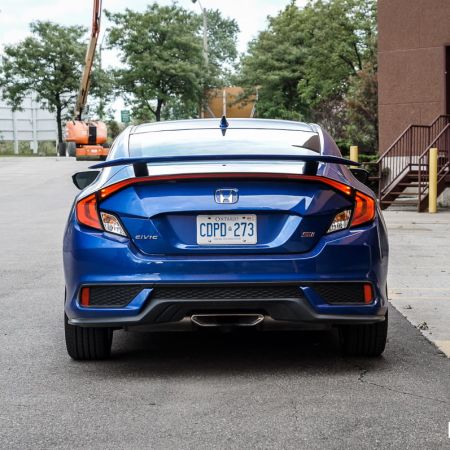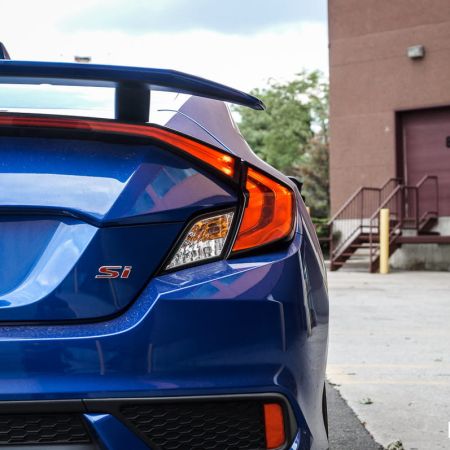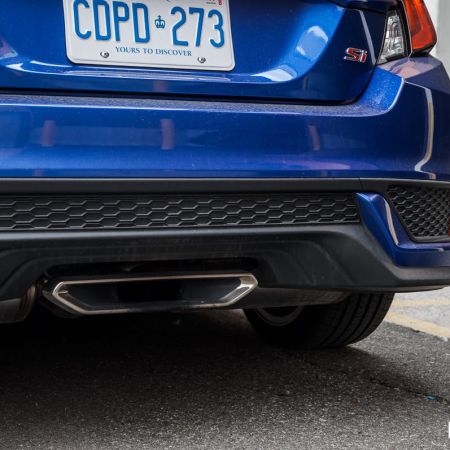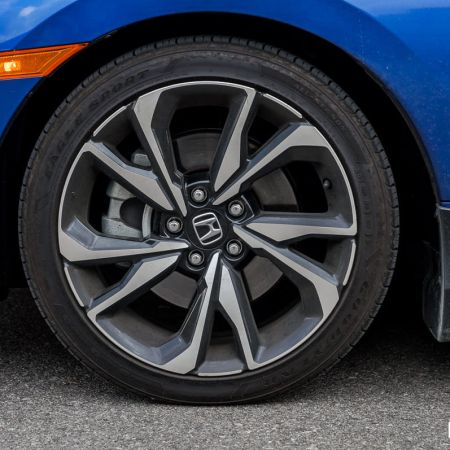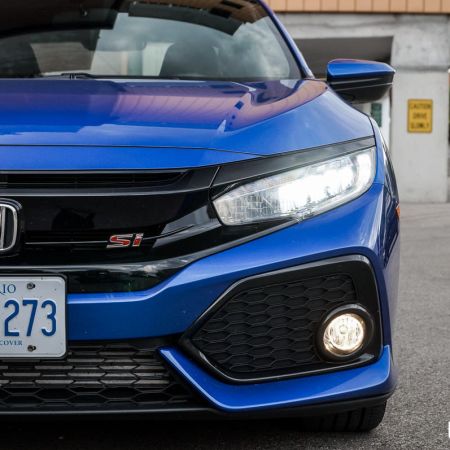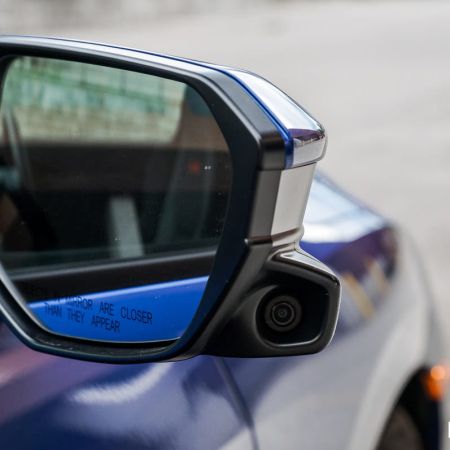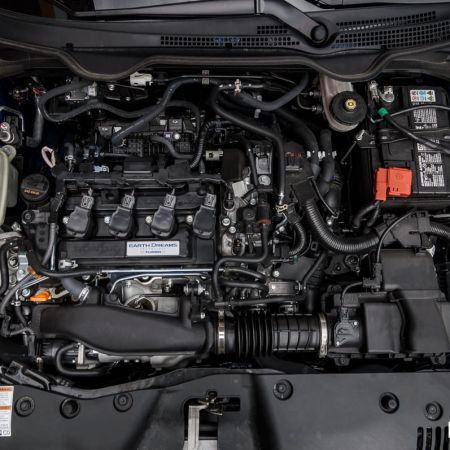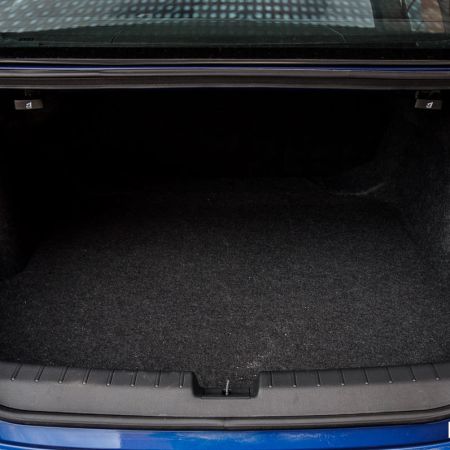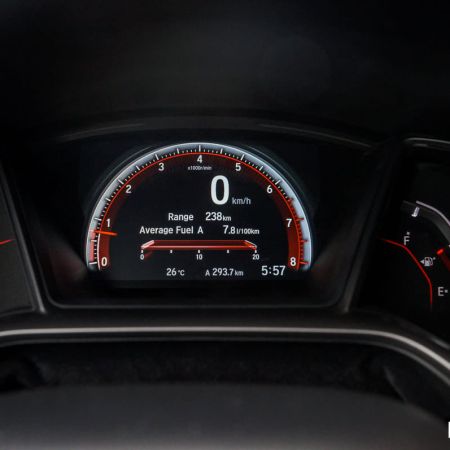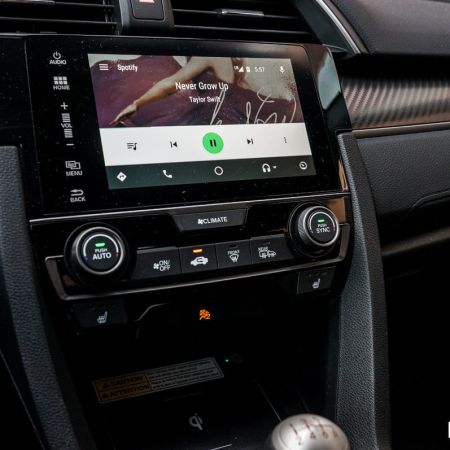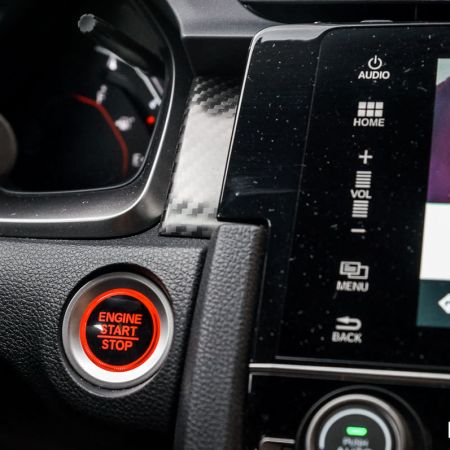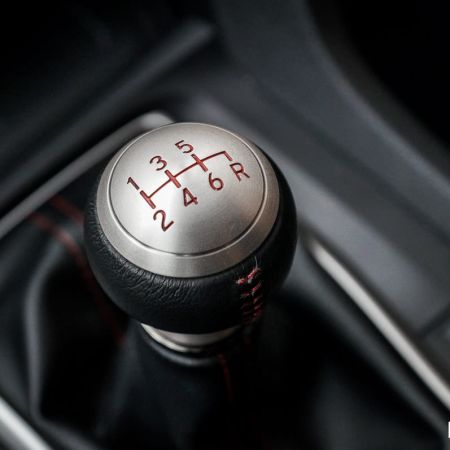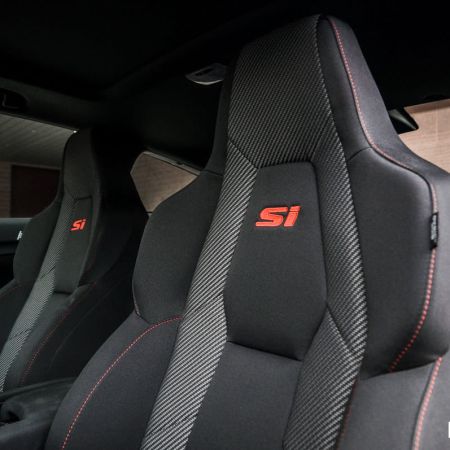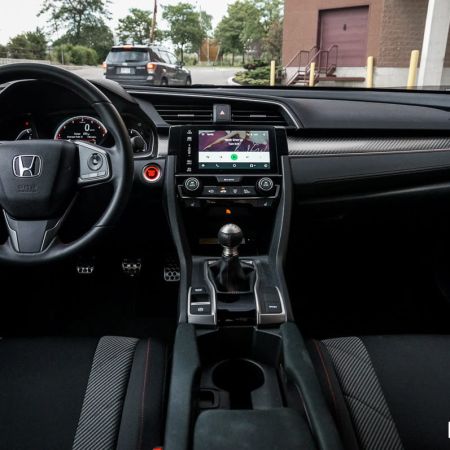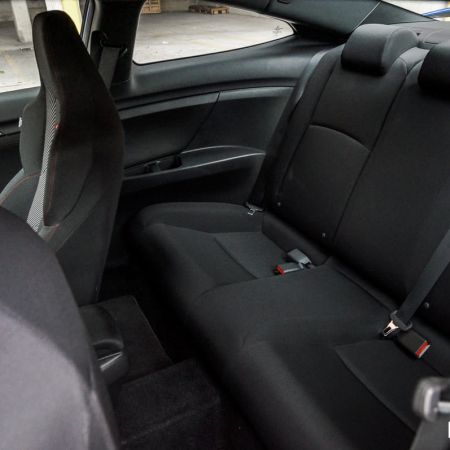Sport compact cars have been a hot item since the early to mid-1980s, with offerings like the original Volkswagen GTI and Honda CRX. Today, it’s still a segment that many auto enthusiasts clamour for in spite of vanilla crossover sport utilities flooding the market. They are one of the greatest bangs for your buck out there for performance per dollar, and typically have good aftermarket support for those who want to turn up the dial a bit more. The 2018 Honda Civic Si Coupe – the tenth-generation Civic in a long line of performance legends – aims to continue the legacy, but has plenty of completion breathing down its neck.
At a price of $29,090, the Civic Si Coupe comes equipped only one way, with no option packages or options beyond your usual dealer-installed accessories. Standard equipment includes dual-zone climate control, sporty grippy cloth seats (heated up front), a navigation system with 452W premium audio, push-button start, LED headlights, and wireless phone charging. Honda Sensing, which would have added forward collision warning with autonomous braking, as well as lane keeping assist, is not available on the Si. Instead, the previous-generation LaneWatch system is included, which uses a camera mounted on the passenger side mirror to further assist with visibility. While all these features don’t quite make the Civic Si a luxury car, they are plenty enough creature comfort for most peoples’ daily driving. Opting for say, a Volkswagen GTI, Subaru WRX (reviewed here), or Ford Focus ST with extra kit will cost thousands more.
Powering all forms of the 2018 Civic Si Coupe is a 1.5-litre, turbocharged “L-Series” four cylinder with – gasp – no VTEC (Variable Valve Timing & Lift Electronic Control)! This has historically been the defining characteristic of the Civic Si, which resulted in peaky performance and rocket-ship propulsion once revved up to a stratospheric redline. Although the previous generation’s 2.4-litre naturally aspirated mill offered a bit more torque down low for daily driving, the turbo four further ups the ante with gobs of low end grunt. It does, however, have a completely different response up top – power falls off towards the more conventional 6,500RPM redline, and the instant response is somewhat dulled while the turbo spools up. On paper, overall peak output is 205 horsepower at 5,700RPM, and peak torque is 192 lb-ft between 2,100 and 5,000RPM.
In the transmission department, you can have any gearbox you like, as long as that’s a six-speed manual – just as the motoring gods intended. With a different setup for the L-Series four cylinder as opposed to the older K-Series (which still powers the legendary Civic Type R, also in turbo form), the Si doesn’t have the sharp, best-in-industry shifter it used to have, but it’s still plenty good. Shifter play is kept to a minimum, but the gates aren’t as snickety-snick as they used to be. Clutch pedal feel is light and numb, and while you’ll never physically notice the clutch’s bite point, it’s still very easy to modulate and lets even novices drive smoothly. Pedal placement for heel-toe downshifting could be better, with the throttle pedal a little low for an optimal three-pedal dance.
With the smaller displacement engine, fuel economy in the Civic Si Coupe is an area that drivers shouldn’t have to worry about. While it does take premium fuel in its 46.9 litre tank, it doesn’t use very much of it; it’s rated for 8.4L/100KM in the city, and 6.2L/100KM on the highway. Observed consumption over a week of mixed driving returned 7.0L/100KM, and it wasn’t too difficult to exceed the highway rating when on the open road.
As a performance machine, the Si is yet another good reminder of how Honda is a master of front-wheel drive. The key to this recipe is a fantastic chassis combined with a limited-slip differential. Add to the mix some great steering and a compliant ride, and it makes for a properly fun ride. Adaptive dampers with a normal and Sport mode offer two different flavours of performance; leaving things in normal is perfectly fine, but Sport spices things up without ruining the ride with excessive stiffness.
Unlike just about all of its Volkswagen, Hyundai, or Ford competitors, the proper mechanical limited-slip front differential allows for the Civic Si to exit corners with a ton of aggression. It also serves to quell torque steer – there’s no tendency for the steering wheel to push or pull when giving it the beans. P235/40R18 all-season tires are standard kit, which give up the ghost a little more easily with progressive understeer, and based on what we’ve witnessed at the local autocross clubs and track days, better tires will really wake this car up. There’s definitely some Civic Type R DNA in this car, for less than three-quarters of the price.
Inside, the 2018 Civic Si is a relatively simple setup, but is executed pretty well. The monotonous sea of grey and black is broken up with red stitching and bits of carbon fibre pattern, and the fit and finish is typical top notch Honda. Seat comfort is good, with more aggressive bolsters keeping front passengers in place under hard cornering. The centre console is a giant cavern of storage, with three cup holders and wireless phone charging, and there are even more cubby holes underneath the shifter.
For day to day use, there are plenty of buttons for the more commonly accessed functions such as climate and heated seats, but the lack of a proper volume knob is frustrating, at the very least. While the absence of the knob has been felt and griped about since this current Civic’s 2016 debut, Honda is listening – the latest Accord and CR-V have seen a resurgence of a no-nonsense knob. Because the volume slider on the touch screen infotainment is clumsy, it’s much more preferable to use the steering wheel-mounted buttons instead. For smartphone connectivity, Android Auto and Apple CarPlay are great interfaces for communication, navigation, and audio playback; and kudos to Honda for including it across the Civic lineup.
All in all, the 2018 Honda Civic Si Coupe provides a sharp performance driving experience that’s just as good, if not better than the likes of the Volkswagen GTI, Hyundai Elantra Sport (reviewed here), Ford Focus ST, and even the Subaru WRX. While the price has crept up over the years, it remains one of the best cars under $30,000, period. The turbo four provides great low end torque at the expense of some personality and response as compared to Si versions of days gone by, but it’s still a good powerplant that’s capable of putting smiles on drivers’ faces. If the big wing on the trunk and fashion-forward styling work for you, consider it a strong contender for the best sport-compact out there.

